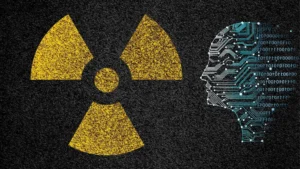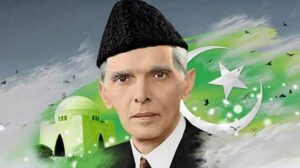From False Flag to False Claim

Proverbs often distil complex stories into simple yet profound truths. The saying “One lie leads to another” aptly captures the desperate attempt by the Indian Air Force Chief, Air Chief Marshal Amar Preet Singh, who made false claims of downing PAF jets during the May war. It was an effort to reclaim lost honour in the South Asian skies after the Indian government declared war on Pakistan under the pretext of a false flag operation. The deliberate distortion of facts by those at the highest level has become a recurring pattern in Indian polity in recent times. This pattern prioritises political face-saving, even at the expense of the professional forces’ reputation and morale.
The Indian Air Force (IAF), like all other forces, was once a professional institution, and that was my impression of its leadership during my interactions. During my career in the Pakistan Air Force (PAF), I served as Pakistan’s Air Advisor in India from 1999 to 2003.
Arguably, one of the most intriguing periods between the two nascent nuclear powers. It was a time when the persecution of Muslims in India reached new heights under the radical mindset of the then Chief Minister of Gujarat, Narendra Modi, who now uses every part of the state machinery to serve his parochial interests as a Prime Minister of India.
During my tenure, I interacted with three Indian Air Chiefs. The first was Air Chief Marshal Anil Yashwant Tipnis, whom I found to be a balanced individual. I recall that he attempted to over-project the IAF’s role in the Kargil conflict, which was not an air war, and sought to position himself as a hero. But to his credit, he never spilled the beans in public and maintained a stance that remained within service norms. He was, however, cut down to size by his critics and the then Indian Army Chief, General Ved Prakash Malik, did not allow him to take undue credit for the IAF’s Operation Safaid Sagar.
The second Air Chief I interacted with was Air Chief Marshal Srinivasapuram Krishnaswamy. He was a Level-headed commander, who stood firm against the provocative intents of India’s jingoistic political elite. During the Twin Peaks crisis, the armed forces were fully mobilised which was similar to what occurred in more recent conflicts. Under his command, the IAF carried out its largest deployment, moving assets from the eastern sector to the western front. Despite the scale of the operation, he exercised restraint. He gave the government a measured and pragmatic assessment. He avoided knee-jerk reactions that could have led to a disaster for the IAF, much like the setbacks they faced in 2019 and 2025. The third was Air Chief Marshal S.P. Tyagi, who, during my time, served as ACAS (Operations) in New Delhi. He exhibited a professional and hawkish mindset. Each of them possessed distinctive leadership qualities and caveats, yet all ensured that the Air Force remained above the political pursuits.
However, under the leadership of Prime Minister Narendra Modi, that professionalism which I observed in the Indian armed forces to a great extent has veered off course. Their moral standards and professionalism are now treated as expendable for preserving one man’s image and illusions. This shift in the Indian armed forces’ moral architecture has come to light in two defining episodes. Firstly, after the airstrikes in 2019, launched under the pretext of the Pulwama false flag operation. When the IAF failed to deliver, missing their targets due to poor employment of air assets, they manufactured a story crafted for political and propaganda purposes to satisfy the ego of BJP and RSS fanatics. Moreover, the IAF did not provide a battle damage assessment to support their claims.. In response, when the PAF launched Operation Swift Retort, downing two of their fighter aircraft and capturing Wing Commander Abhinandan, the IAF refused to acknowledge its losses.
Instead, the then IAF Chief, Air Chief Marshal Birender Singh Dhanoa, made false claims of shooting down a Pakistani F-16, without providing any proofs.
Despite international reports and verification contradicting his claims, he remained adamant. The reports from US also negated his version of story. This behaviour from the top leadership of the Indian armed forces was a manifestation of the adage: when the sword bends to serve the crowns vanity, its edge dulls against the truth.
The second glaring example, a déjà vu moment, again followed the same pattern, beginning with the false flag of Pahalgam and ending with false claims about war trophies.
The IAF lost the air battle on 6/7 May, conceding a 7–0 defeat, but it further lost credibility on the ground when an ill-advised attempt was made by IAF Chief Air Marshal Amar Preet Singh, claiming that the IAF had downed 6 PAF aircrafts. There is an Urdu proverb whose literal meaning in English is “When the dead spoke, he spoke by tearing his shroud”, perfectly explains the IAF Chief’s behaviour. Three months later, an Air Chief of a professional air force was giving a briefing on an event about which he made tall claims, yet failed to present a single piece of evidence.
The goal, I believe, was not to ensure credibility among international observers, but to shape domestic public perception and provide a narrative for the ruling BJP party to peddle, enabling image management for one person. Even though it was a recipe for complete command breakdown, considering the demoralisation it would cause within the Indian armed forces, the IAF Chief was willing to pay that cost.
In contrast, the PAF under the leadership of Air Chief Marshal Zaheer Ahmed Baber Sidhu, adopted a professional and cautious approach regarding war trophies. The PAF’s claims were based on evidence, specifically through electronic IDs radar signals and ground confirmations. The initial claims were of a 5–0 score, excluding the Heron drone.
Later, after a rigorous scrutiny process, the kills of a Mirage 2000 and another Rafale were added. International media were briefed professionally and provided with evidence, which led to the ascendancy of the PAF narrative over the IAF in international circles.
Chinese, US, UK officials including President Trump and Alan Warnes, editor of the prestigious Air Forces Monthly magazine, all acknowledged the PAF’s successes. This credibility and confidence, I believe, was not achievable for the IAF Chief—so he took one for Team Modi.


